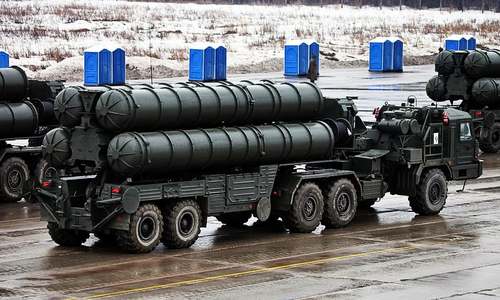What you need to know about India's newly launched ballistic missile defence
The test of Ashwin missile, part of Indian Ballistic Missile Defence Program, is part of a concentrated effort to develop a two-tiered missile defence system by India to counter the threat emanating from Pakistan's strategic missile force.
India seeks to deploy a functional ‘iron dome’ ballistic missile defence (BMD), incorporating both low-altitude and high-altitude interceptor missiles.
Why
India’s decision to develop a BMD in 1999 can be attributed to the Kargil War, when tensions between the two nuclear armed neighbours reached an all-time high, and a warning by then Pakistani Foreign Secretary Shamshad Ahmad that Pakistan can use “any weapon” in its arsenal if the limited conflict were to escalate.
Development for the anti-ballistic missile system started in 1999, with around 40 public and private companies participating in the development process. As a stop-gap measure, India procured six-batteries of the highly effective Russian S-300 air defence systems to protect major cities, including New Delhi.
What
Two interceptor missiles, the Prithivi air defence missile and the Advanced Air Defence (Ashwin) missile are designed to provide a high-low cover against incoming ballistic missiles. Prithivi is reported to be capable of intercepting missiles at exo-atmospheric altitudes of 50 – 80km, while the AAD is designed to operate at endo-atmospheric altitudes of upto 30kms.
The development makes India the fourth country in the world, after the US, Russia and Israel to have successfully developed a ballistic missile defence system.
Prompted by a growing Pakistani arsenal, of both delivery systems and nuclear warheads, India has embarked upon and given priority to creating a BMD, which will also augment India’s overall air defence capabilities. Former Indian army chief, V.K Singh, revealed in March 2014 that 97 per cent of air defences are obsolete, further reinforcing earlier reports regarding the state of air defences employed by the Indian armed forces.
When
The test conducted of the interceptor missile on Sunday was a success, and an important technological milestone was achieved. But a single successful test in controlled conditions does not imply that the system would retain the same level of effectiveness in combat conditions.
A BMD, although effective against a small number of incoming missiles, can be overwhelmed by employing saturation fire. If an opposing force were to shoot multiples missiles in an area of operation, a BMD battery can track and shoot down some missiles, but not all.
Capability
It is yet not known what the capability of the tracking systems linked with the Indian BMD are, as the effectiveness of the planned ‘iron dome’ will eventually come down to how effective those systems are, and their capability to track multiple incoming missiles.
The development of India’s BMD is a cause of concern for Pakistan, as an effective system would to a certain degree negate Pakistan’s strategic strike capability. It will force the armed forces to counter it, a solution which would prove to be both costly and time consuming. India has thus, once again contributed to an unhealthy arms race between the two countries.


































